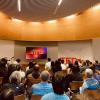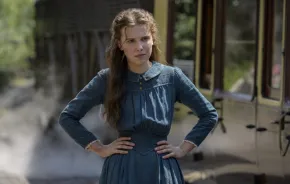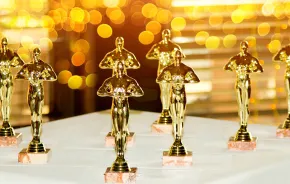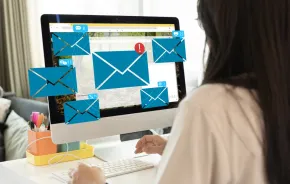
Nearly a quarter of American adults have attended a drag show — a number that may be higher in our area, which is home to some nationally famous drag queens. The concept of drag has expanded from female impersonation to encompass any artistic expression of self and gender through personal presentation. Once restricted to underground nightclubs, today you can find drag on TV, in big theaters such as the Paramount, and even in children’s story times. As drag has become mainstream, vocal opposition has grown, often focused on those story times. There are obviously free speech issues involved in the debate, but what exactly do children stand to gain or lose from the censorship of drag story hours?
Drag queen story times
GLAAD found 161 incidents of anti-LGBTQ+ protests and threats targeting drag events in 2022. In the first three months of 2023, the majority of the 25 such incidents targeted all-ages events. Although the uproar is new, all-ages drag shows have been around for decades.
Drag story times are more recent, but have certainly existed since at least 2015, when the nonprofit Drag Story Hour (DSH) was created by Michelle Tea and RADAR Productions in San Francisco. At the time, Tea was a new mother and wanted to create an event that would be more inclusive of families like hers.
DHS storytellers are paid for their time. They undergo background checks and receive special training in storytelling and speaking to the press. De-escalation training has recently been added, and there are plans to add active shooter drill training as well. Not all drag story times are affiliated with DSH. Independent drag story times are hosted in bookstores and eateries (including Renton drag queen story time at The Brewmaster’s Taproom) as well as in libraries and churches. Regardless of the venue, drag story times follow the normal story-time structure: an adult reads one or more picture books, along with breaks for crafts, games or dancing.
Library drag queen story times
Although every library system is different, most story times at public libraries are arranged at the branch level, often with the resident children’s librarian presenting the stories themselves. As a public service, many libraries rent their meeting spaces to outside organizations to hold events that are not sponsored or endorsed by the library. Libraries can also collaborate with community groups and partner agencies to develop programming that meets library goals. Drag story times are often a result of this kind of partnership.
The Seattle Public Library (SPL) only returned to offering in-person early learning programs in April of this year and is still building up to pre-pandemic levels as need and capacity allow.
“Emerging from the pandemic, SPL has a renewed commitment to community engagement, where decisions around programs and services are driven by community listening and center communities furthest from racial, social and educational justice. Public services should be built for, and, wherever possible, led by community,” says Soraya Silverman-Montano, youth and family learning manager at The Seattle Public Library.
In the case of library-sponsored story times, “They are developed to build and expand early literacy and learning, reflect community interest and meet community needs,” Silverman-Montano explains. For now, SPL is prioritizing restoration of its World Story Times program, during which storytellers with language and cultural competencies serve diverse language communities. Some Spanish story times are currently on offer, but the library is still recruiting storytellers in other languages, including Chinese, Vietnamese and Somali.
Beginning in the same year as the more famous Drag Story Hour, local groups sponsoring Pride events in Greenwood and other Seattle neighborhoods partnered with SPL for drag queen story times. Created specially to support the LGBTQ+ community, these community events were very popular with a broad audience before the pandemic ended these and all other in-person events. Because library programs are tailored to the host community, protests are seldom sponsored by local groups. A survey of GLAAD’s list of incidents reveals that the Proud Boys and the white-nationalist Patriot Front are involved in most protests; in Ohio, neo-Nazis have made multiple appearances.
Locally, King County Library System libraries have also hosted Drag Queen Story Hour in the past, although none are currently scheduled. Seattle Pride, White Center Pride and other Pride events throughout the area have scheduled both drag queen story times and all-ages drag brunch events throughout June.
Silverman-Montano notes that although drag events are popular, they are not sufficient on their own, and are only one of the many ways libraries can support the diverse facets of the LGBTQ+ community. This year marks SPL’s return to in-person Pride Month programming, with a broad range of offerings. There will be Pride Story Times (not hosted by drag storytellers this year) as well as other family-friendly events and reading lists, including picture books.
Appropriate
People who have never attended a drag show or watched “RuPaul’s Drag Race” on TV may confuse drag with burlesque. Stripping and nudity are common in burlesque, but rare in drag, and never part of an all-ages performance. Compared to regular drag shows, drag storytellers tend to lean into the tacky auntie look or embrace the fantastical with rainbows and unicorn horns. All the sequins, glitter and heavy makeup are not entirely unlike a little kid playing dress-up. But not all parents believe that creative gender expression while reading picture books to children is appropriate.
“A library’s collections, programs, services, initiatives, etc., cannot and should not be appropriate to all users. Instead, they should be relevant to the needs and interests of the expansive, diverse communities we serve, including users and non-users of the library,” says Silverman-Montano. Library users decide which services are appropriate for their families. Historically and currently, library non-users may not see the library as a welcoming or accessible place for them. To provide equitable service to the entire community, “Libraries must meet people where they’re at, and prioritize supporting underserved and underrepresented communities with limited to no access to library resources otherwise,” she says.
Education and acceptance
Drag story times are designed to be developmentally appropriate to the ages attending and to promote early literacy through engaging and inclusive stories and activities. They include books with themes that celebrate diversity, self-acceptance and the acceptance of others who are different from us. Silverman-Montano refers to Dr. Rudine Sims Bishop’s “Windows, Mirrors, and Sliding Glass Doors” for anyone seeking to understand the value of reading diverse books and books with LGBTQ+ representation. Drag story times send the message that biological sex or gender does not restrict anyone’s choice of clothes, toys or career, and that it’s okay to be your authentic self even if that’s different from what people expect. Viewed through a window or in a mirror, that’s an important lesson.
Story time at Home“Julián Is a Mermaid” by Jessica Love “47,000 Beads” by Koja Adeyoha “Red” by Michael Hall “Rooster Wore Skinny Jeans” by Jessie Miller “It’s Okay to Be a Unicorn!” By Jason Tharp “From the Stars in the Sky to the Fish in the Sea” by Kai Cheng Thom “Love Makes a Family” by Sophie Beer |











